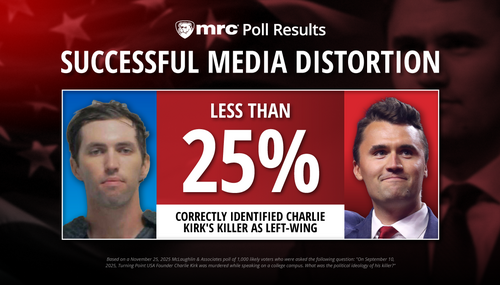
It's no wonder if you take a look. This story is all hype and no substance:
Early in Senator John McCain's first run for the White House eight years ago, waves of anxiety swept through his small circle of advisers.
A female lobbyist had been turning up with him at fund-raisers, visiting his offices and accompanying him on a client's corporate jet. Convinced the relationship had become romantic, some of his top advisers intervened to protect the candidate from himself -- instructing staff members to block the woman's access, privately warning her away and repeatedly confronting him, several people involved in the campaign said on the condition of anonymity.
When news organizations reported that Mr. McCain had written letters to government regulators on behalf of the lobbyist's client, the former campaign associates said, some aides feared for a time that attention would fall on her involvement.
Mr. McCain, 71, and the lobbyist, Vicki Iseman, 40, both say they never had a romantic relationship. But to his advisers, even the appearance of a close bond with a lobbyist whose clients often had business before the Senate committee Mr. McCain led threatened the story of redemption and rectitude that defined his political identity.
It had been just a decade since an official favor for a friend with regulatory problems had nearly ended Mr. McCain's political career by ensnaring him in the Keating Five scandal. In the years that followed, he reinvented himself as the scourge of special interests, a crusader for stricter ethics and campaign finance rules, a man of honor chastened by a brush with shame.
But the concerns about Mr. McCain's relationship with Ms. Iseman underscored an enduring paradox of his post-Keating career. Even as he has vowed to hold himself to the highest ethical standards, his confidence in his own integrity has sometimes seemed to blind him to potentially embarrassing conflicts of interest.
Mr. McCain promised, for example, never to fly directly from Washington to Phoenix, his hometown, to avoid the impression of self-interest because he sponsored a law that opened the route nearly a decade ago. But like other lawmakers, he often flew on the corporate jets of business executives seeking his support, including the media moguls Rupert Murdoch, Michael R. Bloomberg and Lowell W. Paxson, Ms. Iseman's client. (Last year he voted to end the practice.)
After the Iseman innuendo and that weak bit about direct flights from D.C. to Phoenix, the Times waltzed down memory lane to recap the Keating Five savings and loan scandal: Charles Keating owned Lincoln Savings & Loan Association and contributed heavily to McCain's campaigns.
A Nexis database search shows that the last time a Times reporter discussed John McCain and the Keating Five was almost five years ago. There have been hundreds of stories on McCain since then, including strongly positive ones from his current presidential campaign, that didn't mention it. Only now, when McCain has seemingly locked up the GOP nomination and is beginning to look toward the general election by going after Barack Obama, does the Times dredge up the old McCain scandals.
The paper goes into the McCain-Feingold campaign finance "reform" before turning awkwardly back to McCain's alleged relationship with lobbyist Vicki Iseman, relying on two anonymous former staffers who admit "they had become disillusioned with the senator."
Mr. McCain's confidence in his ability to distinguish personal friendships from compromising connections was at the center of questions advisers raised about Ms. Iseman.
The lobbyist, a partner at the firm Alcalde & Fay, represented telecommunications companies for whom Mr. McCain's commerce committee was pivotal. Her clients contributed tens of thousands of dollars to his campaigns.
Mr. Black said Mr. McCain and Ms. Iseman were friends and nothing more. But in 1999 she began showing up so frequently in his offices and at campaign events that staff members took notice. One recalled asking, "Why is she always around?"
That February, Mr. McCain and Ms. Iseman attended a small fund-raising dinner with several clients at the Miami-area home of a cruise-line executive and then flew back to Washington along with a campaign aide on the corporate jet of one of her clients, Paxson Communications. By then, according to two former McCain associates, some of the senator's advisers had grown so concerned that the relationship had become romantic that they took steps to intervene.
A former campaign adviser described being instructed to keep Ms. Iseman away from the senator at public events, while a Senate aide recalled plans to limit Ms. Iseman's access to his offices.
In interviews, the two former associates said they joined in a series of confrontations with Mr. McCain, warning him that he was risking his campaign and career. Both said Mr. McCain acknowledged behaving inappropriately and pledged to keep his distance from Ms. Iseman. The two associates, who said they had become disillusioned with the senator, spoke independently of each other and provided details that were corroborated by others.
The Times concluded with a statement from the campaign, which was clearly ready for this shoe to drop:
Mr. McCain's presidential campaign issued the following statement Wednesday night:
It is a shame that The New York Times has lowered its standards to engage in a hit-and-run smear campaign. John McCain has a 24-year record of serving our country with honor and integrity. He has never violated the public trust, never done favors for special interests or lobbyists, and he will not allow a smear campaign to distract from the issues at stake in this election.
Americans are sick and tired of this kind of gutter politics, and there is nothing in this story to suggest that John McCain has ever violated the principles that have guided his career.
Not even the liberal New Republic was impressed:
So here's the essence of the Times' 3,000-word "bombshell" on John McCain.
John Weaver, whom McCain fired last summer (identified in the Times piece as "now an informal campaign adviser" to McCain, which sounds like a puffed-up euphemism for "unemployed") says that 8 years ago, he and two other former employees who have since "become disillusioned" (read: disgruntled), suspected that McCain was having an affair with a lobbyist.
The rest of the article, rehashing old news about the Keating Five, is, as Rich Lowry says, complete "window dressing." If you had been wondering whether the Times was in the tank for Obama, well, here's your answer.
Lowry, editor of the National Review, doesn't think the Times has the goods:
Let's be honest: this story is all about the alleged affair, and all the Keating Five and campaign finance reform re-hash is window dressing....The Times appears to have done what any conservative media critic would have predicted -- sat on the story until the day after John McCain declares himself the nominee. It's hard to imagine the Times advanced the story much since December. If it did, just how weak was it back then?
Slate's "Today's Papers" column by Daniel Politi noticed the awkwardness:
The story itself is rather odd because it begins with the explosive revelation that McCain might have had an affair, but it then tries to blend it in with a look back at the Keating Five scandal and other instances where McCain stepped away from his persona as a lawmaker who fights against special interests, which could have been interesting by itself as a mere memory-jogger. The NYT then waits until near the end of the story to go back to the relationship with the lobbyist. Overall, the paper presents surprisingly little evidence that there actually was inappropriate behavior beyond the concerns of some staffers, which makes one wonder what was left out of a piece that was undoubtedly heavily vetted by lawyers. Of course, McCain and Iseman both deny there was any kind of romantic involvement, and yesterday his campaign issued a statement calling the story "a hit-and-run smear campaign."
Not even the uber-liberal commenters at nytimes.com are on board this particular train.
Finally, blogger Captain Ed wrote:
The New York Times launches its long-awaited smear of John McCain today, and the most impressive aspect of the smear is just how baseless it is. They basically emulate Page Six at the Post, but add in a rehash of a well-known scandal from twenty years ago to pad it out and make it look more impressive. In the end, they present absolutely no evidence of wrongdoing -- only innuendo denied by all of the principals.
As some have already pointed out, being attacked by the New York Times might accomplish what no conciliatory CPAC speech could: rally skeptical conservatives to John McCain's side.




